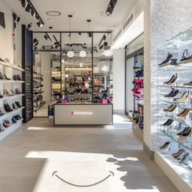Roadmap to adaptive retail

Retail
183 week ago — 8 min read
The COVID-19 pandemic has not only deeply impacted the retail sector but has also compelled companies to reassess their business models and operations. After more than a year of intermittent lockdowns, there have been long-term shifts in consumer preferences, consumption patterns and buying behaviour. Changes anticipated to occur in the next decade have been compressed in a few months, led by digital adoption.
According to a recent Accenture report, the proportion of online purchases for products such as food, home décor, fashion, and luxury goods by previously infrequent ecommerce users has increased 667% since the outbreak of the pandemic in the country. The surge in digital commerce is likely to continue or accelerate further. The important question is whether retailers in India are ready to compete with digital native brands that have a clear advantage when it comes to digital commerce.
According to a recent Accenture report, the proportion of online purchases for products such as food, home décor, fashion, and luxury goods by previously infrequent ecommerce users has increased 667% since the outbreak of the pandemic in the country.
As the pandemic continues to impact businesses, retailers need to be adaptive and resilient to the changes happening around. While on one hand there is a spurt of local, digital-first brands, on the other hand there is an increasing awareness among people around conscious consumption. With social distancing norms in place and with the after-effects of the second wave, customers continue to be wary of returning to stores. The long-term impact of the increase in digital commerce along with the fall in physical store footfall has forced retail companies to reimagine their traditional business models. To succeed in the post-pandemic economy without eroding operating margins, retailers need to consider the following:
Reassessing capabilities
Digital commerce in India broke out of its peripheral shell with groceries and there are multiple models that have successfully emerged. Until recently, majority of non-food retail companies focused primarily on the expansion of their physical stores across the country, and investment in digital was an after-thought. The rapidly evolving scenario has left many businesses facing a significant capability gap that needs to be urgently addressed. To compete with digital-first brands, investment in digital commerce capabilities should be the top priority. Retail companies need to adapt to offer omnichannel experiences and invest in capabilities such as cloud, hyper-localized demand analytics, and smart forecasting based on machine learning.
Executing digital and analytical capabilities at pace will also require retailers to redefine their workforce models and explore new ways to serve the consumer more effectively and efficiently. For example, the re-organisation of business to cater to an omnichannel model will also require upskilling or reskilling of the workforce to be digitally fluent.
Building a robust digital commerce platform
As retailers grapple with more direct-to-home orders and lesser store visits, they also have an opportunity to use technology to reach out to consumers in innovative ways. The need of the hour is to provide an online experience which is similar to the offline experience or the store visit. This will involve investments in a digital commerce platform to drive seamless customer journeys on the mobile site, analytics to drive hyper personalization, agile supply chain to drive hyper localization, hyper focus on products to drive differentiation and all of the above to drive superior customer experience.
The entire customer journey from searching the product, evaluating and selecting it to payment and shipment, needs to be seamless. Any bump in the journey results in customer dissatisfaction or an abandoned cart and lesser repeat visits. A leading offline retailer in India took the right call to focus on getting the platform correct before spending on digital marketing to direct the traffic on the website and reaped good results. Immersive technologies such as augmented reality (AR), virtual reality (VR), 3D content can be used to recreate the physical store experience and help shoppers better visualize a room of furniture or an outfit. These technologies can not only enhance customer engagement, replicate in-store experiences, but also drive sales.
Opting for Analytics led hyper personalisation
There is a need for retailers to analyse all the customer data points that are captured at a single platform which can provide a closer 360-degree view of the customer. Unless the overall view of the customer is available, it is difficult to drive personalization. This is where the concept of a data lake comes into play which has the ability to house all the data in one place, basis which analytical models can be run to customize promotions and offers for the segment of ‘one’. It is not enough just to have state of the art analytical model churning out insights, it is of paramount importance to have the ability to effectively communicate the promotion to the target customers by leveraging various marketing automation tools. This closed approach is what enables retailers to bring hyper personalisation to life.
Focussing on Product differentiation
Product is the King holds true even in the digital commerce environment. Retailers need to make consistent efforts to differentiate their products and services. Offering differentiated or exclusive products is an incentive for the customers to return to the platform providing an opportunity for the retailer to crosssell or up-sell their products and services.
Revamping the supply chain
Faster and more agile, forward and return supply chains which provide complete visibility and transparency to the customer is another key aspect of driving superior experience. Retailers need to leverage their network of stores and hence a more agile supply chain is important to be able to effectively compete with digital native organizations. Experiences such as curb-side pickup or return, faster delivery or return, can only be provided by traditional retailers. A seamless, omnichannel experience across supply chain, fulfilment operations and online shopping will depend on the use of digital technologies and will mark a shift to a more agile and resilient supplier network.
The pace of change in retail will accelerate further. To keep up, retailers need to consciously invest in technology, people, and supply chain. They need to explore new ways to serve the consumer more effectively and efficiently. The ability to adapt to new expectations and changes, will decide which companies will emerge as winners in the post-pandemic economy.
Also read: Key technology trends that are reshaping retail
Image source: shutterstock.com
Article published in STOrai Magazine. Sameer Amte is a Managing Director with Accenture Strategy and Consulting. He is focused on leading digital driven EBITDA improvement for companies across multiple industries. He has been working across the apparel value chain and has a keen understanding of consumer trends impacting the retail industry. He has done significant work in the areas of analytics and digital commerce. He is passionate about helping Indian organisations transform into digital businesses.
Disclaimer: The views and opinions expressed in this article are those of the author and do not necessarily reflect the views, official policy or position of GlobalLinker.
View STOrai 's profile
Other articles written by STOrai Magazine
The Art & Science of People Pleasing in Retail
12 week ago
Most read this week
Trending













Comments
Share this content
Please login or Register to join the discussion